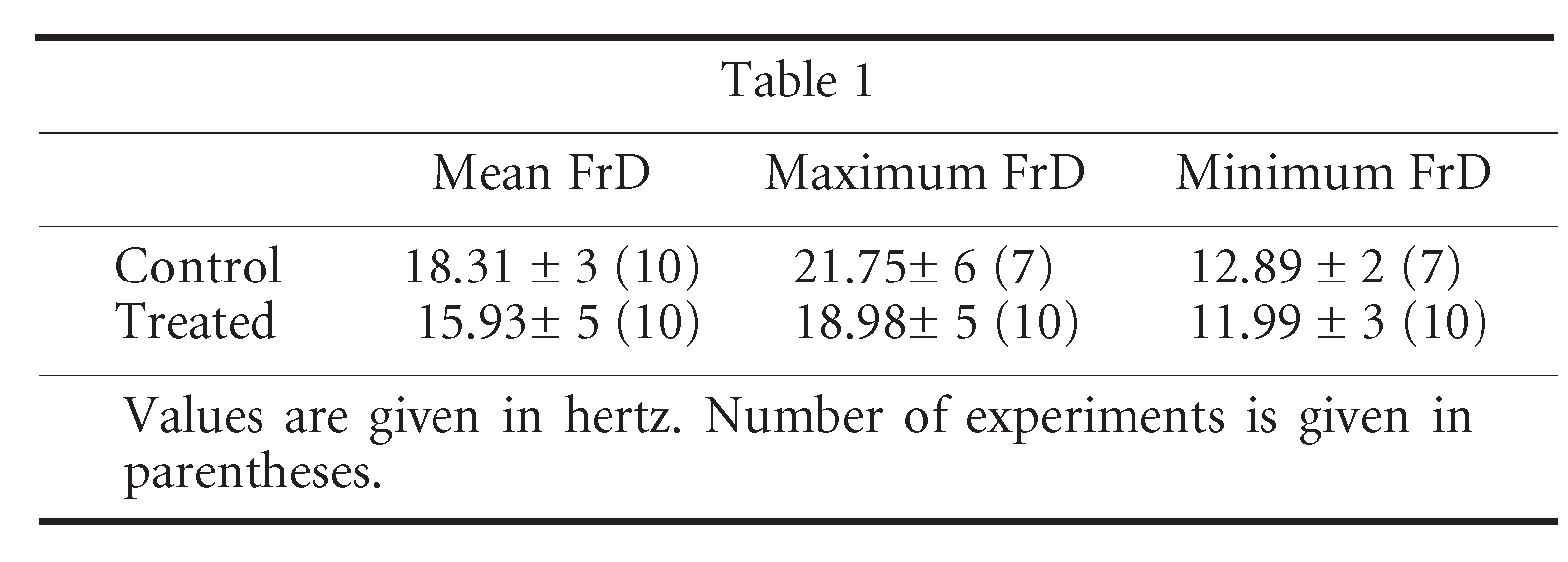It has been reported that Na+/H+ exchanger inhibition exerts beneficial effects on ischemic and reperfused myocardium, against arrhythmias (Gazmuri et al. 2001). In the present study, we analyse the effect of inhibition of this exchanger on ventricular fibrillation (VF) induced by pacing, in order to assess modifications of the intrinsic dominant frequency (FrD) of VF as a characteristic of this arrhythmia.
All the procedures were performed in accordance with the agreements of the European Convention of Strasbourg of March 18, 1986 (Instrument of ratification of 8/2/89, Official State Bulletin of 10/25/90). After anaesthetizing, heparinizing and killing 10 NZW rabbits (2.5 ± 0.4 kg), the heart was excised and immersed in a cold (4 °C) Tyrode solution; after, it was connected to a Langendorff system through the aorta (Tyrode pressure and temperature, 60 mmHg and 37 ± 0.5 °C, respectively). Ventricular stimulation electrode and atrial recording electrode were placed on ventricle and atrium, respectively. One plaque with 121 recording electrodes was placed on the left ventricle for ventricular electrograms. VF was induced by pacing at increasing frequencies. Two minutes after VF was induced, 5-(N-ethyl,N-isopropil) amiloride (EIPA), a well-known inhibitor of the Na+/H+ exchange system, was infused into the aortic root (0.04 µM) in the treated group. The analysis of dominant frequency was performed with data blocks of 2048 points (sampling rate = 1 kHz) before starting the main steps. FrD was obtained for each block. Data processing was performed with Matlab software on a Hewlett-Packard 712/80 platform. Two groups were used: a group of isolated hearts not treated with EIPA (control), and a group of isolated hearts treated with EIPA (treated). Student’s unpaired t test was used to compare the results between both groups. Statistical significance was accepted when P < 0.05.
Mean values and standard deviation corresponding to mean FrD, maximum FrD, and minimum FrD values are shown in Table 1.
The inhibition of the Na+/H+ exchange system by EIPA did not modify FrD of ventricular fibrillation in normoxic conditions, as occurs with other intrinsic electrophysiological parameters, i.e. ventricular refractoriness, previously investigated.
This work was supported by grant no. PM98-0204 of Ministerio de Ciencia y Tecnología and by grant no. GV99-136-1-04 of Generalitat Valenciana.

